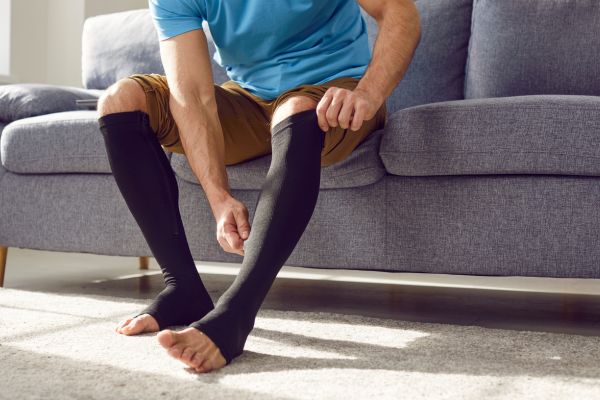When it comes to bouncing back after a hard workout, long run, or even just an intense day on your feet, recovery is everything. And let’s be real—nobody wants to wake up feeling like they can’t walk down the stairs because of sore muscles. That’s where compression gear comes into play. Athletes, fitness lovers, and even weekend warriors swear by it. The question is: what’s the best compression gear for recovery in 2025? Let’s break it down in a way that actually feels useful, not overly technical.
Why Compression Gear Matters for Recovery
The thing is, your muscles don’t magically heal themselves overnight. They need proper blood flow, oxygen, and reduced swelling to get back to peak condition. Compression gear helps by gently squeezing targeted areas—like your calves, quads, or arms—so circulation improves and soreness decreases. Think of it as giving your muscles a little hug while they heal.
If you’ve ever slipped on compression socks after a marathon or pulled on tight recovery tights after leg day, you know the difference. The aches fade faster, the swelling goes down, and honestly, you just feel a lot more human the next day.
Different Types of Compression Gear
When we talk about the best compression gear for recovery, it’s not a one-size-fits-all situation. Different types serve different purposes, and depending on your lifestyle, one might make more sense than another.
Compression Socks and Sleeves
These are classics. Runners love them, travelers use them, and anyone dealing with calf soreness benefits. They keep blood from pooling in your lower legs and reduce post-exercise swelling. In 2025, a lot of brands have stepped up their game with better fabric blends that are breathable, moisture-wicking, and even antimicrobial.
Compression Tights and Pants
For anyone hitting squats, deadlifts, or long cycling sessions, compression tights are a lifesaver. They don’t just cover your calves—they support hamstrings, quads, and glutes too. Some brands even integrate targeted panels that focus on problem areas, making them some of the best compression gear for recovery after full-body workouts.
Compression Tops and Arm Sleeves
Upper body recovery sometimes gets overlooked. But if you’re lifting heavy or training sports like tennis, basketball, or CrossFit, compression tops can reduce muscle fatigue in shoulders, chest, and arms. Arm sleeves, on the other hand, are great for localized recovery, especially if you’ve been throwing, rowing, or hitting the gym hard on upper-body day.
Advanced Compression Tech
Now, here’s where it gets futuristic. In 2025, we’re not just talking about tight socks. There are compression boots and sleeves that use air pressure to massage your legs, improve circulation, and flush out lactic acid. They’re pricier, sure, but if recovery is non-negotiable for you, these are the Cadillac of compression gear.
What to Look For When Choosing Compression Gear
You might think, “Aren’t they all just tight clothes?” Not exactly. Picking the best compression gear for recovery depends on a few factors:
- Fit and Comfort: Too tight and you’ll cut off circulation. Too loose and you lose the benefits.
- Material Quality: Look for breathable, sweat-wicking fabrics. If they don’t dry fast, they’ll get uncomfortable.
- Durability: Recovery gear gets a lot of wear. Cheaper options lose elasticity quickly.
- Target Area: Choose gear based on the muscles you use most. Runners? Go for socks. Weightlifters? Tights or sleeves may make more sense.
- Budget: High-tech compression boots are amazing, but not everyone needs them. Sometimes a solid pair of socks does the trick.
Best Compression Gear for Recovery in 2025
Let’s talk brands and products. While I’m not here to pitch a single “best” product—because honestly, what works for me may not work for you—I can point out a few that athletes are buzzing about this year.
- CEP and 2XU Socks: Still leaders when it comes to performance and recovery socks. They’ve added more breathable fabric blends that feel way less restrictive.
- Nike and Under Armour Tights: Stylish enough to wear outside the gym but engineered with compression zones that really support recovery.
- Normatec and Hyperice Boots: If you’re serious about recovery, these pneumatic compression systems are as good as it gets. Pop your legs in, and within 30 minutes you’ll feel like you’ve shaved off hours of soreness.
- Skins and Compressport Arm Sleeves: Perfect for upper-body focused athletes who need targeted recovery after throwing or lifting.
The best compression gear for recovery is really about matching your needs with the right product. If you’re a weekend runner, a simple pair of calf sleeves may be all you need. But if you’re an elite athlete training six days a week, investing in high-tech recovery boots could be a game changer.
Real Talk: Do You Really Need Compression Gear?
Here’s the thing. Compression gear isn’t magic. It won’t replace sleep, hydration, or a balanced diet. If you’re staying up late, eating junk, and not drinking enough water, no pair of socks will save you. But compression gear does give your body an edge. It speeds up recovery, reduces soreness, and helps you get back out there faster. And sometimes, that little edge makes all the difference.
Final Thoughts
The world of recovery is always evolving, and in 2025, compression gear has gone beyond simple socks and tights. Whether you’re sticking with tried-and-true sleeves or leveling up with high-tech boots, the best compression gear for recovery is the kind that fits your lifestyle, your budget, and your training goals.
At the end of the day, recovery is about giving your body the tools it needs to heal. Compression gear just happens to be one of the simplest—and most effective—tools you can use. So next time you finish a brutal workout and wonder how you’re going to function tomorrow, remember: a little compression might be all it takes to keep you moving strong.
